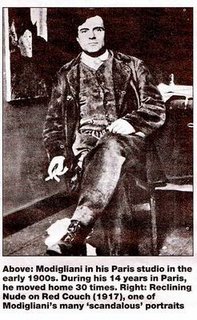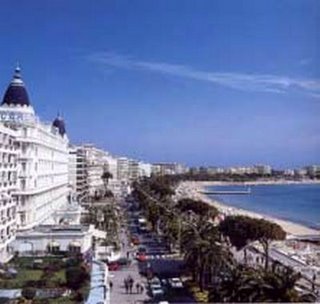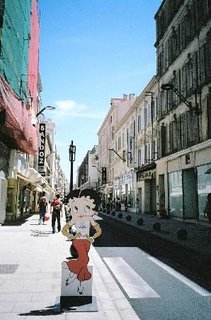Blog your b&w photographer Sigi W SCHULZ
After working 30 years as an architect in Paris, Sigi W. SCHULZ decided to realize his second profession to his first. Up to now his photographic topics are more combined with architectural aspects (Rome, Paris, New York and Berlin), but he did not want to stick with any rules as an so-called "photographer of architecture", and changed his mind more to human aspects. Finally the documentation and report of "the German doctors" gave him the best relevant possibility to follow the right way.
Sigi W. SCHULZ was born in 1949 in Ansbach/Bavaria. At the age of 7 he got his first "Adox 6x6". First photo laboratory experiences during the grammar school time followed. In 1977, after studying, he began to work as an architect in Paris. parallel to his national and international projects, he took photographs around Africa, Germany, Paris, Moscow and U.S.A.; first photo reports were created since 2000. Photography is now his first main activity.


exhibitions
| 2000 | july - september: maison robert doisneau, gentilly/paris: "cercle photo de gentilly" (group show)
|
| 2001 | march - april: centre culturel gentilly: "zig zag" (group show) |
| 2001 | may: bibliotheque pablo-neruda, malakoff/paris: "artistes pour la paix" / künstler für den frieden (group show) |
| 2001 | may: rathaus malakoff: "etendards pour san san nweeh", ausstellung und versteigerung für "reporter ohne grenzen" (group show) |
| 2002 | march - april: centre culturel gentilly/paris: "zig zag" (group show) |
| 2002 | may - june: bibliotheque pablo-neruda, malakoff/paris: "artistes pour la paix" / künstler für den frieden (group show) |
| 2002 | november: bibliotheque pablo-neruda, malakoff/paris: "rom" |
| 2003 | january - february: rathaus gentilly/paris "art'mosph`eres" (group show) |
| 2003 | april - may: salon d'art contemporain, montrouge/paris "saigon flou" |
| 2003 | may: bibliotheque pablo-neruda, malakoff/paris: "artistes pour la paix" / künstler für den frieden (group show) |
| 2003 | may: centre culturel gentilly/paris: "zig zag" and "paris metro"(group show) |
| 2003 | august: 'amandier, chatenay-malabry/paris "metro" |
| 2003 | october: salon d'art contemporain, paris, thiais "paris metro", 1. preis sektion foto (group show) |
| 2004 | march - may: stadt- und bergbaumuseum, freiberg-thüringen/germany: "das sehen von aussen" (group show) |
| 2004 | march-may: ärztekammer salzburg/austria: "german doctors" of calcutta |
| 2004 | october: syndicat d'initiative, choise-le-roy, paris: "structures, architectures, reportages" |
| 2004 | december: maison robert doisneau, gentilly/paris: "le regard de l'exterérieur" (group show) |
| 2005 | august - october: goethe institut mannheim-heidelberg/germany: "german doctors" of calcutta |
| 2006 | may - july: galerie "autour de l'art" antibes/france |
Q. You have exhibited widely in Europe. Whch is your most popular subject, and why?
A. Although my former professional job was as an architect; most people know me through my 'geometric' composition in my photographs. I do not take photos of buildings anymore these days; but I find my lens still lead me to compose my photographs in a pseudo-architecural way. I like taking candid photos in the metro of Paris. I like this photo because of the 'tenderness' captured in the moment.

Q. Do you think that even when we are living in a modern integrated Europe; there are vast regional preferences in photography?
A. It's easy to dwell on the regional preferences like that you'll find in cuisine. However, generally speaking; each region presents its own story to tell the viewers. I just use my camera to present what I find during my travel and I let the photos speak their stories. However, I must confess that I do like to select my subject based upon my own preference first. This is the prerogative of the author.

Q. Who are your main influences in b & w photography?
A. I have many many photographers whom I regard as 'great'; people like Cartier-BRESSON & DOISNEAU etc; but I also like to create my own influence based upon my training as a professional architect. In fact, it's more of a choice I seek in technique than style in my photos. I hope my viewers will appreciate the symmetry found in my subjects being captured in a frame. I quite like an organised way of existence rather than playing by chance.

Q. Apart from showing your current work of the Paris "Metro" at "Autour-de-l'art" in Antibes, where else can we go to see your other work?
A. I travel around Europe a lot on different assignments. However, people could also reach me and my work at the following website:-
http://www.rallefotoagentur.de/fotografen_schulz.html

FCéline
A garden of Eden
Son jardin d'éden

FCéline is a well-known artist residing in the South of France, specialising in abstract oil-painting. She began exhibiting her works since 1993 and has achieved much success in raising the awareness of her own special brand of 'modern feminity' expressed through oil-painting of fruits adorning the naked human body. She is currently exhibiting at the gallery Autour-de-l'art in Antibes of her latest works.
L’amour et la maturité de ses émotions ont permis à Fcéline artiste peintre de exprimer à travers ses peintures. Son dernier thème actuellement exposé à la galerie antiboise « Autour de l’Art » ; « Le Jardin d’Eden » nous transporte par les couleurs et la créativité.

Q: Your art is very expressive, does it bother you that it may be open to the wrong interpretation?
A: Well yes, it may be; if you allow your imagination cloud your own judgment. As an artist, I'm totally against control of any kind. I use my skill as an artist to express my view on life; and I welcome any kinds of interpretations which I have no control over. Such is the freedom that I value.

Q: Votre art est très expressif et subjectif, cela vous dérangerait-il s’il était mal interprété ?
R: Chacun est libre de voir dans mes œuvres ce qu’il ressent.

Q: You refer to your experience in your official website "www.fceline06.free.fr" a lot about the following keywords; "fantasies and reality", "smile in Africa", "secret gardens of spirituality" and "intimacy & fragility". Can you explain these sentiments in your current works?
A: I hope your viewers do not take me too literally. After all; I'm talking about my artistic evolution during a period of 13 years and my views on life have evolved through the reception I received from my audience. I want to remain optimistic in a life that is both full and fulfilling. I smile easily!

Q: Pourquoi avoir choissi des fruits et des légumes comme support de votre nouvelle création ?
R: Au prémisse, J’ai travaillé sur la création de deux pommes. L’évidence est nées à mes yeux. C’est ainsi qu’est apparu « Le Jardin d’Eden », les corps se sont dessinés autour des fruits.

Q: Do you think it is important to paint your subject with an appropriate environment in mind; and if so, what domestic setting would you reccommend to your potential customers?
A: I choose my subject to paint according to my inspiration that I receive at the time. I do not pre-select any setting of environment in which my art is seen. However, the customer must be the final selector for the final use of my art; but working with a professional framer is a most beneficial step to take as a means to blend successfully my art into any homes.

Q: Les textes que l’on peut lire sur vos œuvres font parties intégrante de vos toiles. Qui les a écrit et quel rôle ont-ils ?
R: Ils sont nés de mes différentes lectures et de mes sensibilités littéraires. Hormis, biensûr, la définition du « Jardin d’Eden », mes textes symbolisent la finalité de ma création dans le sens où ils me permettent de m’encrer dans mes idées et choix artistiques.

What are the advantages of custom framing?
Why should I pay extra for a custom picture frame, when I can buy a ready-made frame at the local discount store?
This is a good question, for which the normal answer is that there are many times when a mass produced picture frame is appropriate. However, when you want to prepare your fine art or treasured heirlooms for display, custom framing is the best answer. A creatively finished custom frame will display artwork, mats, molding, and other elements to create a presentation that is unique, that complements your personality, and enhances your home or office. It is a personal creation that you will never find in a department, discount, or furniture store. Your beautiful fine art, needlework, special personal memorabilia, wedding photographs & invitations, or hard-earned certificates should be framed in a manner that does them justice, and prevents their deterioration over time. Your custom framed artwork is a permanent investment in the decoration of your home, which will outlast many of your other accessories. It is more personalized than most of your other furnishings. We at Autour de l'Art will recommend the best design techniques, and colour coordination to make the framing itself a work of art.
Why are matting combinations important?
There are many special design treatments that can be applied to your custom framing job. Some of these are: French mats, carved mats, embossed mats, inlayed mats, V-grooved mats, and etched glass. All of these techniques can result in a unique custom framing job, but their use must be selected carefully to ensure that they enhance, rather than detract from your artwork. Usually, one or two of these embellishments applied in concert, will really create a novel work of art.

From an aesthetics point of view, the mats provide several design qualities that enhance your artwork. One or more mats can provide depth, width and colour to your framed art. Two or more mats remove the flatness, giving your framed piece a three-dimensional look. This enhances any depth that the artist intended to create in the original work. Your artwork needs some space around it to prevent distractions from the surrounding wall treatment. Mats provide this space, allowing your art to be seen clearly. Matboards now come in hundreds of colors, textures and appearances. The choice of mat colors can be used to achieve several benefits. Carefully chosen mats can often enhance the artwork, while providing a transition to the room’s decor. Fabric mats can be used to add texture to your art. Mats covered in silk or smooth linen achieve elegance if your decoration is more formal. Some of our customers change their mats when they change their decor, to maintain the coordination of their artwork. A discussion of matting options would not be complete without mentioning quality options.
Today, there are three main options – there are paper mats and rag mats are available in a full range of colors. The third option are archival mats, which are a blend of rag and paper, but which have been treated to remove most of the acid, lignins and other impurities. These mats are suitable for matting all but the most valuable artwork, and they come in a huge variety of colors and textures.

Can I order special designs?
There are many special design treatments that can be applied to your custom framing job. Some of these are: French mats, carved mats, embossed mats, inlayed mats, V-grooved mats, and etched glass. All of these techniques can result in a unique custom framing job, but their use must be selected carefully to ensure that they enhance, rather than detract from your artwork. Usually, one or two of these embellishments applied in concert, will really create a novel work of art.
How do I select a frame?
The frame provides structural strength to enable you to cover your art with glass or acrylic and to hang it. But the colour, style and texture of the moulding add its own ingredient to the recipe of your custom-framed art. We have a huge variety of mouldings available(over 10,000), but your choice should coordinate with the art, the mats, and the particular effect you desire to achieve. For example, a bamboo-like moulding is great for oriental work, or a “Marie-Louise” inlay works well for European art. Mouldings made from natural woods and finishes are often used to coordinate with similar wood furnishings and to provide a “simple elegance” to the art. Mouldings can be used in combination to build a truly unique frame that will add additional width and color to your custom-framed art. A fillet, a narrow moulding inlaid inside the mat, coordinated with the frame moulding can be used to provide an inspired multi-dimensional look to your art. The possibilities are nearly endless, but we can help you choose the best combination for your very own presentation.The frame must be cut and assembled carefully to ensure tight corners and structural strength. Frames with bold, deeply embossed designs cannot always be cut so that the patterns match together at the corners. This is so because there is no industry-wide mathematical correlation between design spacing and even standard frame dimensions, much less the infinite sizes available in custom framing. In these cases, it is sometimes necessary to fill the patterns at the corner seams and blend the colors so the mismatch is not noticeable

Do you have suggestions for mounting 3-D objects?
Three dimensional objects present no problem to our experienced team. There is a way to encase everything from WWII military medals for your grandfather, sport jerseys, baby shoes, vacation souvenirs, or a china doll for your daughter. A shadow box can be very simple or it can incorporate rich fabrics and woods for a superbly elegant effect. Heirloom plates, spoon collections, coin collections, medals, and antique pistols are some examples of items that can be displayed in shadow boxes. Larger items, such as dolls, or an autographed football require display cases. Your design consultant can determine the best way to display and protect just about any object in a shadowbox

Do you do needlework/tapestry framing?
Needlework includes all needlework, embroidery, crossstich, and crewel, whether they be from kits or original designs. Tapestries include hand woven rugs, handmade quilts, and batiks. Since these articles represent a considerable investment of skill and time, it is very important that they be displayed and protected from damage. There are many ways to display these items, and each may require special treatment to bring out the best in the work and to ensure its preservation.
Do you provide mirror framing?
We can build a mirror frame to fit in perfectly with your decoration. A mirror can be cut and framed to fit any place, to within a quarter inch. Department stores or furniture stores may be limited to only certain sizes or styles of mirrors, whereas, we have a whole range of sizes from which you can select. We carry over 10,000 mouldings so you'll be sure to find the perfect combination
What is conservation glass and when do I need it?
First, let’s discuss the need. All sunlight and some artificial light contain an invisible electromagnetic component called ultraviolet (UV) light. These light waves are much shorter than visible light and contain more energy (the same energy that causes you to sunburn). This higher energy creates a greater degree of heat and causes more rapid deterioration of the molecular structure of the pigments used in printing. Conservation glass should be used whenever you are framing sentimental, valuable, limited edition and one-of-a-kind artwork. Conservation glass is clear glass (preferably float glass) to which an ultraviolet (UV) inhibiting film has been applied. Conservation glass blocks about 97 percent of the UV rays, compared to 46 to 50 percent blocked by regular clear and non-glare glass
What should I use to clean my picture framing glass?
Most commercial window cleaners are good for cleaning framing glass. Avoid all-purpose cleaners, disinfectants, or any cleaner that contains pumice, waxes, or harsh detergents. If your frame contains conservation glass, you should avoid using anything with ammonia (note that some commercial glass cleaners do contain ammonia). Windows cleaners with vinegar or vinegar-D work great, and tests indicate that they are safe for any glass. There are several new types of glass coatings coming on the market which make require special care. We will provide specific instructions for these special cases. You should always spray the cleaner on the cloth, then wipe the glass. Otherwise, if you spray directly on the glass, the liquid is likely to run down between the frame and glass, and could eventually wick up the framing package to the artwork
Ten things to know before framing your picture:
-
What and why to custom frame. - Whether you are framing a poster, your kid's handprints, or a fine work of art, custom framing will reflect your personal taste and protect your piece for years to come
-
Consider the surroundings. - While you should certainly consider the room's decor, you shouldn't match the frame to the room at the expense of what looks good with the picture. Keep in mind that the room decor may change in the future
-
Choose matting to enhance your artwork. - Matting is the term used to describe the "window-cut" material placed around an image within a frame. They can be made of a variety of materials such as paper, cotton and fabric in a wide range of colors. Mats serve as a spacer allowing the artwork to expand and contract with changes in humidity. Matting makes the overall size of the finished piece larger and provides a space for the eyes to rest between the art and the frame
-
An ounce of prevention. - Many times cherished art is damaged prior to arriving at the frame shop because it is improperly stored or transported. If it's a rolled piece such as a poster, serious damage can be caused by rubber bands, tape, paperclips and even a gentle squeeze. Make sure that the artwork is placed in a folder, protective covering , or a tube. To prevent accidental damage, allow us to remove the artwork from its packaging
-
It's all in the details. - Consider adding another detail. Fillets, beveled mat treatments, creative window openings, specialty paper or fabric mats can add a distinctive flair to your artwork. We are familiar with these options, and can help you decide what works best with your item. Sometimes it's the smallest element in framing your artwork that makes it stand out.
-
Choose the best frame to enhance your art. - There are thousands of different frame styles and sizes that come in a variety of stains, glazes, and finishes. Let us help you select the frame that best suits your artwork and have it made to your exact specifications
-
Archival materials protect your art. - Some common framing materials such as paper mats and cardboard contain acid that will gradually destroy your art, and these materials are not used by Get The Picture. Using archival mats and backing boards will help protect art from the damaging effects of time and from common pollutants that cause yellowing, fading and deterioration.
-
Mounting your artwork properly. - The dry and wet mounting processes bond artwork to a board to prevent artwork from bubbling or waving and are most appropriate for posters and photographs. Pieces of any value are generally not dry or wet mounted since these processes are irreversible and can greatly affect any resale value. Museum mounting, commonly known as hinging, attaches the art with paper hinges to the board. The art hangs freely, allowing it to expand or contract with changes in humidity. Hinging or archival photo corners are recommended for original artwork, delicate photographic's, and other irreplaceable items.
-
Choose glazing to protect your artwork. - Glazing refers to the glass or acrylic material covering the artwork as a means of protection. There are many variations including regular clear glass, anti-reflective (chemically coated), non-glare (acid etched) and conservation glass (specially formulated to help filter UV light). There are also acrylic glazing products that come in the non-glare and UV filtering varieties. Acrylic is lighter in weight and is safer than glass but requires a soft cloth and a non-abrasive cleanser. It is ideal for oversized pieces, frames hanging in children's rooms, or items to be shipped
-
Find the right framer - A good framer will help you with all the decisions that go into properly framing your picture. Quality framers have years of experience with preservation framing and design using a variety of materials and methods. For outstanding customer service and the latest products, design theories, and techniques, you can rely on Autour de l'Art for excellent service
Bonjour,
On peut encadrer une photo sans passe-partout pourquoi pas, mais en tant que professionnelle je ne le conseille pas. L'encadrement est une mise en valeur mais surtout une technique de conservation. Un verre ne doit jamais être en contact direct avec l'oeuvre encore moins si il s'agit d'une photo, la gélatine risque de se coller sur le verre! Maintenant si il s'agit d'une simple reproduction papier( poster) aucun problème.
SOPHIE























































June 3rd, 2006 at 10:06 am Bonjour,Votre site est très intéressant, nous avons besoin de beaucoup de la discussion comme ça sur ligne.Comment vous pouvez faire les cadres sans passe-partout pour des photos?